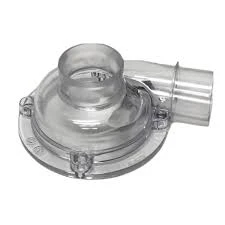Mobile:+86-311-808-126-83
Email:info@ydcastings.com
Understanding Connections for Cast Iron Pipes in Plumbing Systems
Understanding Cast Iron Pipe Connections
Cast iron pipes have long been a preferred choice for plumbing and drainage systems due to their durability, strength, and resistance to environmental factors. Their connection methods are equally important as they ensure the integrity and functionality of the entire system. This article delves into the various types of cast iron pipe connections, their benefits, and the considerations one must keep in mind when working with them.
Types of Cast Iron Pipe Connections
1. Hub and Spigot Connections One of the most traditional methods for joining cast iron pipes is the hub and spigot connection. In this method, one end of the pipe (the spigot) is designed to fit into the other pipe (the hub). This connection usually requires a lead and oakum joint, where the space between the hub and spigot is filled with lead to create a watertight seal. Despite its effectiveness, this method can be labor-intensive and has largely been replaced by modern alternatives.
2. Mechanical Joints Mechanical joints are another common type of connection used in cast iron piping. These connections involve the use of a rubber gasket and bolts or clamps to secure the pipes. Mechanical joints are popular due to their ease of installation and maintenance. They allow for some flexibility in alignment, making them ideal for systems that may experience slight shifts or movements.
3. Flanged Connections Flanged connections utilize a flat piece of metal (the flange) that is bolted to the end of each pipe, creating a secure and removable joint. This type of connection is particularly valuable in systems that require frequent maintenance or access. It facilitates easy disassembly for repairs without the need to cut pipes or displace large sections of plumbing.
4. Push-Fit Connections A newer technology in cast iron piping is the push-fit connection. This method is designed for ease of use and can significantly speed up installation. The pipes are fitted together through a specialized collar that locks the two pipes in place. Push-fit connections are ideal for residential applications due to their simplicity and efficiency.
Benefits of Cast Iron Pipe Connections
- Durability Cast iron pipes are exceedingly robust and can withstand high pressures and heavy loads. When properly connected, they can last for decades without significant degradation.
- Noise Reduction Cast iron has excellent sound-dampening properties, which reduces noise from flowing water and waste. This feature is especially beneficial in residential, commercial, and industrial settings.
cast iron pipe connections

- Corrosion Resistance While cast iron is susceptible to corrosion over time, modern treatments and coatings can enhance their durability and resistance to rust, ensuring longer-lasting connections
.Considerations
When working with cast iron pipe connections, several considerations should be made to ensure a successful installation
1. Weight Cast iron pipes are heavy, and adequate support must be in place to manage strain. Careful planning of supports and hangers is essential to prevent sagging or damage.
2. Alignment Proper alignment is crucial for ensuring that connections are secure and leak-free. Misalignment can cause undue stress on joints, leading to premature failure.
3. Installation Techniques Different connection types may require specific installation techniques. It’s imperative to follow manufacturer guidelines and industry best practices to avoid potential issues.
4. Maintenance Regular inspections and maintenance are important to address any signs of wear or corrosion, especially in older systems. This proactive approach can save time and money in the long run.
Conclusion
Cast iron pipe connections play a significant role in the overall performance and reliability of plumbing and drainage systems. By understanding the various connection types, their benefits, and the critical considerations for installation and maintenance, homeowners and professionals can ensure the longevity and effectiveness of their cast iron systems. Whether utilizing traditional methods or modern innovations, the importance of proper connections cannot be overstated in maximizing the potential of cast iron piping.
-
Why Should You Invest in Superior Pump Castings for Your Equipment?NewsJun.09,2025
-
Unlock Performance Potential with Stainless Impellers and Aluminum End CapsNewsJun.09,2025
-
Revolutionize Your Machinery with Superior Cast Iron and Aluminum ComponentsNewsJun.09,2025
-
Revolutionize Fluid Dynamics with Premium Pump ComponentsNewsJun.09,2025
-
Optimizing Industrial Systems with Essential Valve ComponentsNewsJun.09,2025
-
Elevate Grid Efficiency with High-Precision Power CastingsNewsJun.09,2025











